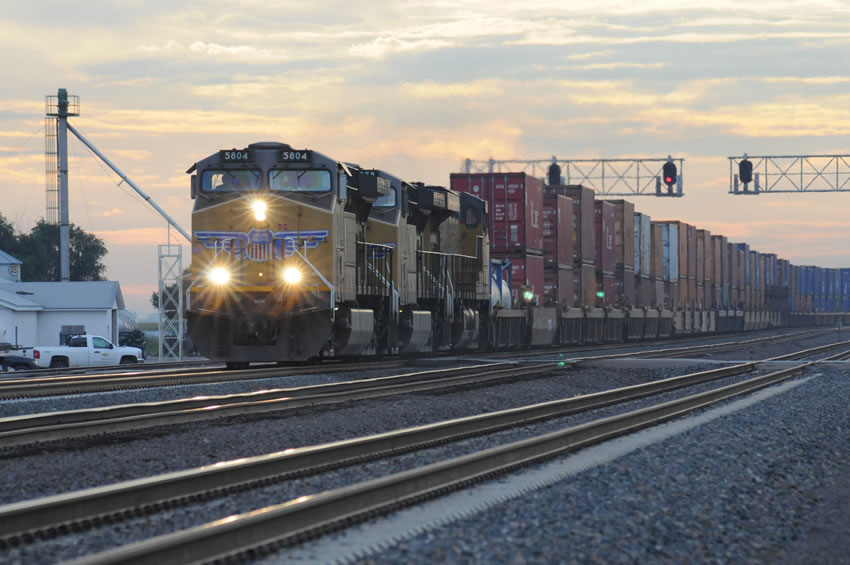

Share
Saying safety requires it, the Federal Railroad Administration is proposing to mandate two-person crews in all but a few instances on the nation’s freight railroads.
If FRA’s proposed rule makes it all the way through the convoluted federal rulemaking process, it would be a big win for rank-and-file rail workers and their unions, who have agitated, lobbied for and even gotten state legislatures to mandate two-person crews. Last year, such a measure was before the Minnesota Legislature.
FRA cited the contrast between two recent dangerous railroad accidents.
In July 2013, a crash and resulting explosion caused 47 deaths in Lac-Megantic, Quebec. Only the engineer was on the train, which came loose from the tracks and careened into downtown Lac-Megantic, where it exploded. FRA said a two-person crew could have avoided the devastation by splitting the train onto two sidings and checking its brakes.
In December 2013, near Casselton, N.D., an eastbound,104-car oil train collided with a car from a westbound grain train “that had derailed less than two minutes earlier from an adjacent main track.” While a fire broke out among 475,000 gallons of oil from 18 derailed cars and 1,500 people were evacuated, nobody was killed and there was little area damage.
Because there were three crewmembers on the 112-car grain train – an engineer, a conductor and a student engineer trainee – the impact was limited, the FRA said. The oil train had two crewmembers.
“Many members of the general public who viewed the news accounts of burning wreckage may not be aware that heroic actions of the grain train’s crewmembers potentially prevented the environmental and property damages from being much worse, in addition to potentially shortening the evacuation period,” the FRA said.
The two oil train crewmembers “worked as a team in an emergency situation to divide up tasks, warn the dispatcher and local emergency responders, and protect each other’s safety,” and they also got the local deputy sheriff to get area residents away, preventing deaths among them, FRA said.
The agency says quantitative studies back two-person crews, adding the studies show that “positive train control” – an automatic train-slowing and braking system many freight railroads have yet to install – “does not substitute for all the tasks performed by properly trained conductors.” That’s also been the rail unions’ reasoning for two-person crews.
Arguing that extra crewmembers would cost them a lot of money, the nation’s big railroads are lobbying FRA for one-person crews. They got them in areas such as local railyards. But FRA discounted those cost claims. It said keeping a second crew member, or adding one where needed, would cost railroads between $5 million and $27.7 million over a decade,
“Preventing a single fatal injury would exceed the breakeven point” for costs and benefits “in the low range and preventing five fatalities would exceed the break-even point at the high range” of costs, FRA said.
John Previsich, president of the United Transportation Union, a division of SMART, the Sheet Metal, Air, Rail and Transportation Union, praised the FRA’s action.
“Our view is that one-person operations are unsafe under any circumstances and we believe issuing this proposed rule is a critical first step in helping to ensure that our nation’s trains are operated fully staffed with two qualified crewmembers,” Previsich said. “Airplanes are not allowed to fly with just one pilot, and for sound safety reasons trains – many hauling hazardous materials – should be no different.”
The FRA is now taking comments on the proposed rule.

